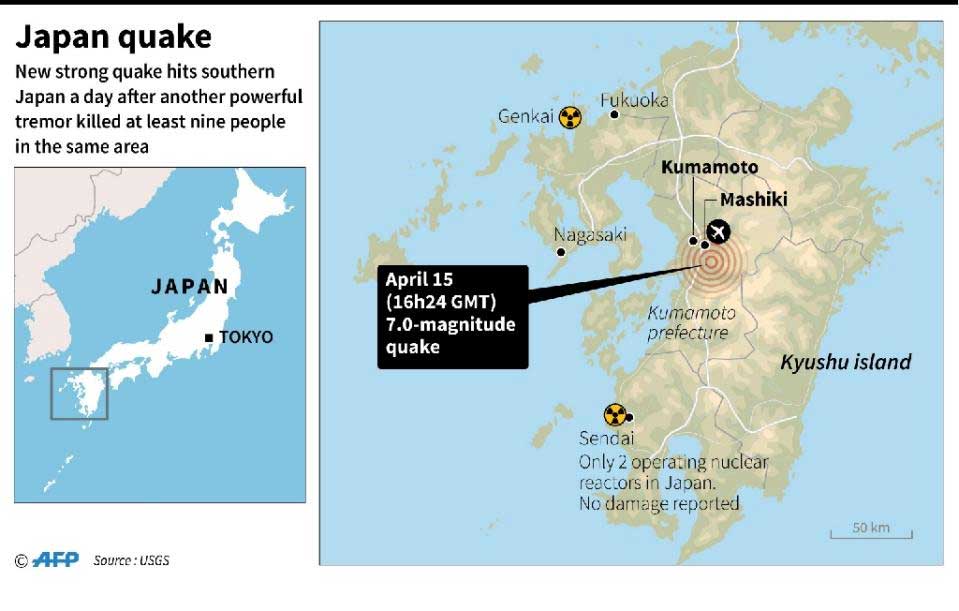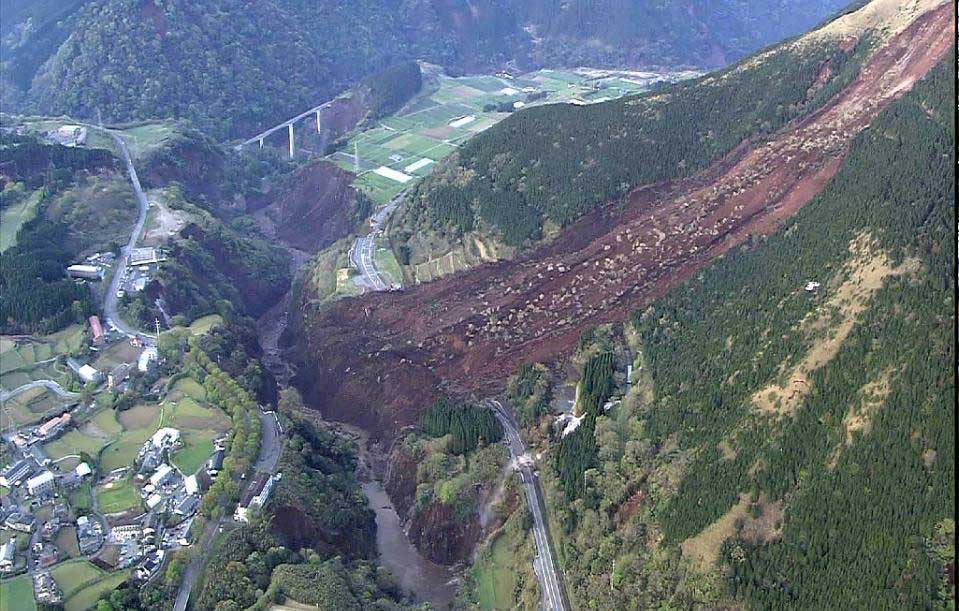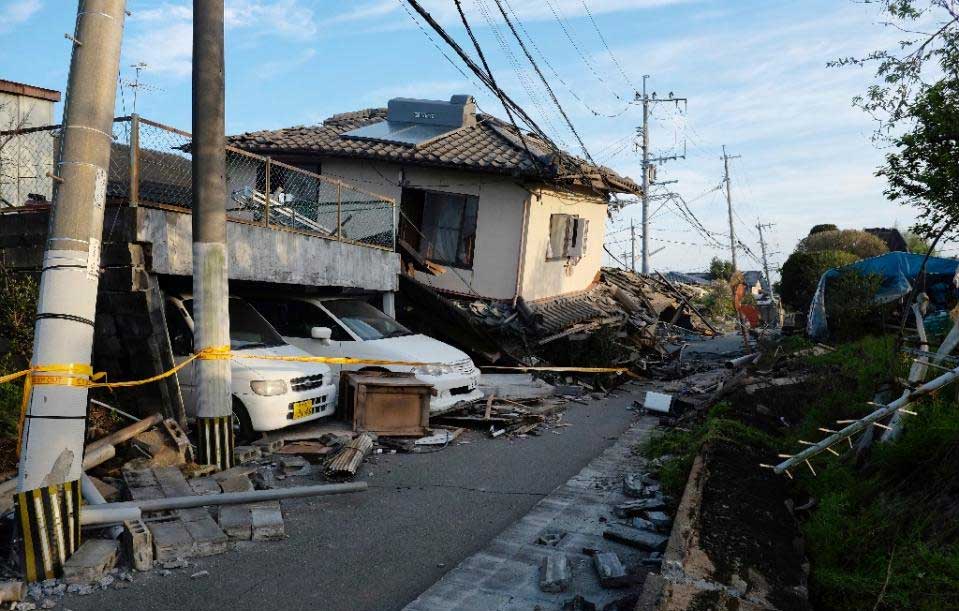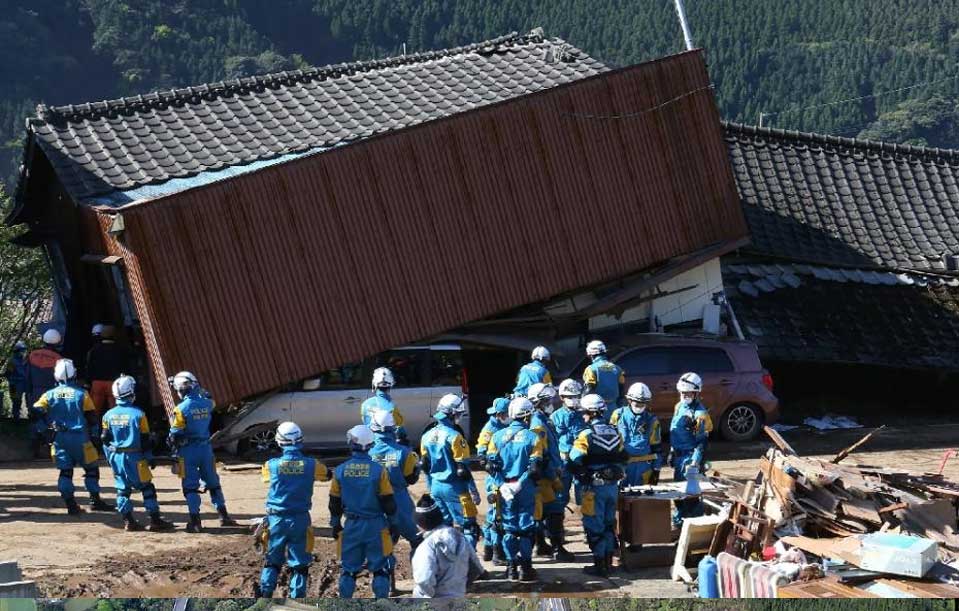Scores trapped as new Japan quake toll hits 18

Aftershocks continued to rock Kumamoto and its surroundings.
(AFP) - Scores of people were feared buried alive after a second powerful quake hit southern Japan Saturday, killing at least 18, and sparking collapses and fires, barely 24 hours after the first disaster struck.
Hillsides gave way as huge landslides swamped houses and severed transport links, while fires engulfed several homes.

Buildings were reduced to rubble, including a university dormitory, where at least two students died, with fears for the safety of dozens of other people over a large area.
"We are aware of multiple locations where people have been buried alive," chief cabinet secretary Yoshihide Suga told a press conference.
"Police, firefighters and Self Defense Force personnel are doing all they can to rescue them."
A hospital was left teetering after the powerful quake, forcing the evacuation of patients and further stretching the emergency response.
Isolated villages in the mountainous area of southern Kyushu island that was the focus of the quake were completely cut off by landslides and damage to roads, with at least 1,000 people believed trapped in one area alone.

The 7.0 magnitude quake came as emergency responders were working to reach areas already affected by a 6.2 magnitude tremor that struck late Thursday.
Adding to worries was the eruption of a nearby volcano, although seismologists cautioned there was no evidence of a link and said activity was limited.
AFTERSHOCKS
Aftershocks continued to rock Kumamoto and its surroundings, an area unaccustomed to the powerful quakes that regularly shake other parts of seismically-prone Japan.
Thursday’s initial quake felled older buildings and killed nine people, but Saturday’s, which struck in the middle of the night, brought newer structures crashing down, including a municipal office in the city of Uto.

"Sixteen more people were killed after the second powerful quake," said Mariko Kuramitsu, a Kumamoto prefectural official.
Separately, Tokai University announced that two of its students, who were among around a dozen trapped in a dormitory building in Minami-Aso, were now known to have died.
"We offer our sincerest prayers for the two," said a statement on its website. "We’re trying to confirm the safety of other students."
The total death toll from both quakes currently stands at 27.
Government spokesman Suga said around 1,500 people were injured, with 80 of them hurt seriously, but warned the figure was in flux and likely to rise.
‘IT WAS SO SCARY’
At least one of those who died was killed when a fire ripped through an apartment complex in the town of Yatsushiro, a local official said.
In nearby Kumamoto city, authorities evacuated patients from a hospital over fears it could collapse, with television footage showing the building tilting precariously.
Hisako Ogata, 61, fled to a nearby park with her daughter, where some 50 other people sat on blue plastic sheets.
"We left my house as we could not stay due to continuous jolts," Ogata told AFP.
"It was so scary," she added. "Thank God we are still alive."
An AFP journalist in the city at the time said he was jolted awake by powerful shaking, which sent the television set in his hotel room crashing to the floor. Staff urged guests to evacuate.
Kumamoto airport was forced to close after a ceiling collapsed, Jiji Press reported, with no immediate plans to resume flights, and communications in the area were spotty.
‘REALLY STRONG’
Japan Meteorological Agency official Gen Aoki said Saturday’s quake was the strongest to hit in recent days, and that Thursday’s was merely a "precursor".
With strong winds and heavy rain forecast for later Saturday expected to further complicate an already-difficult rescue operation, the government announced the emergency response would swell to 20,000 people, including troops, firefighters and medics.

Japan, one of the most seismically active countries in the world, suffered a massive undersea quake on March 11, 2011 that sent a tsunami barrelling into the country’s northeast coast.
Some 18,500 people were left dead or missing, and several nuclear reactors went into meltdown at the Fukushima plant in the worst atomic accident in a generation.
A nuclear plant on Kyushu was unaffected by Saturday’s quake, the government has said.


